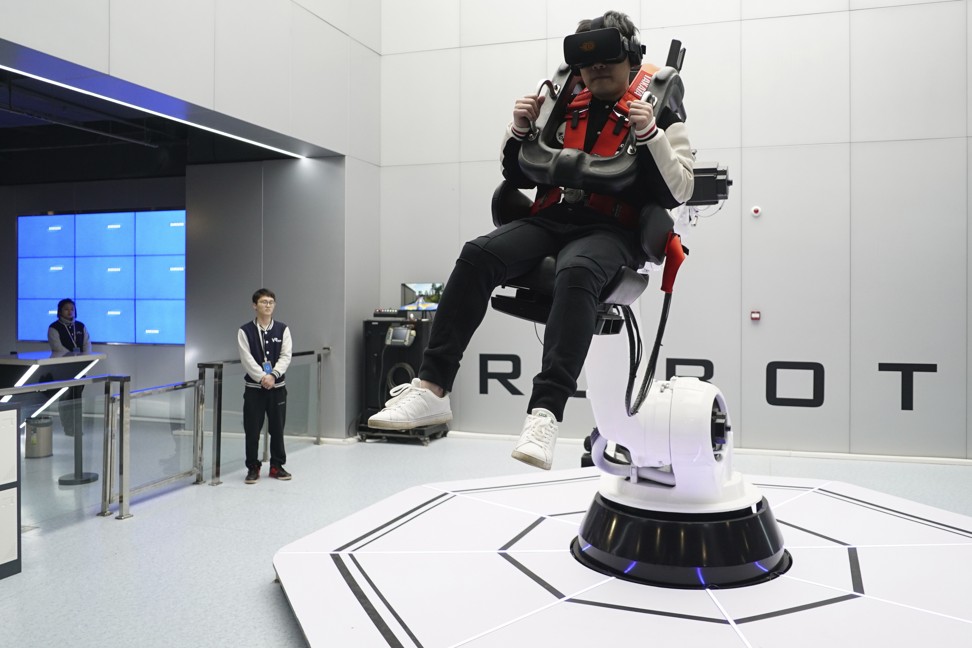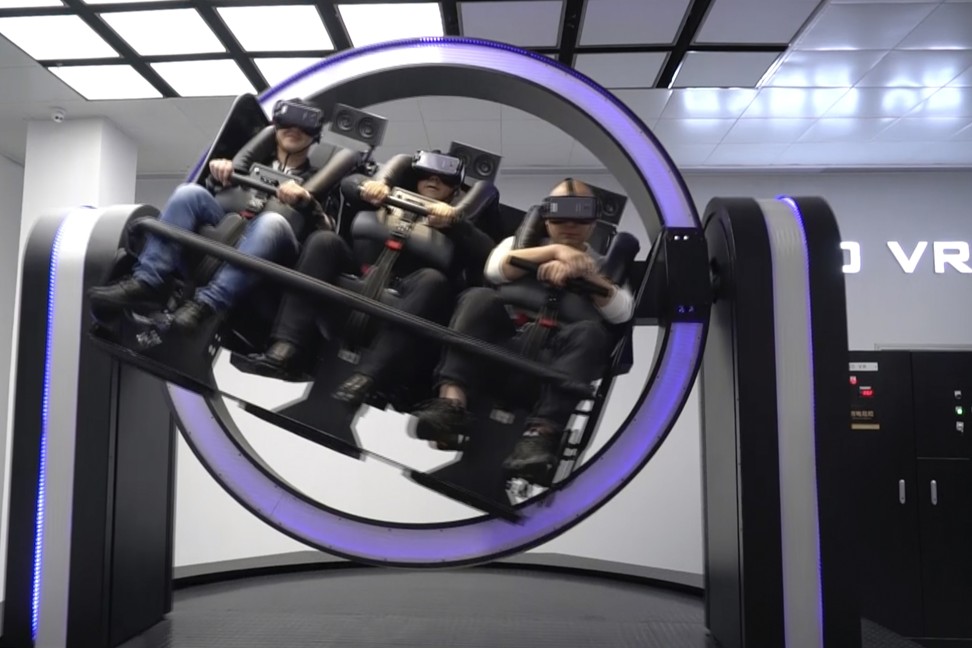This Chinese City is Going Big on Virtual Reality
The South China Morning Post (SCMP) is reporting of a provincial Chinese city that has made a really huge virtual reality play. The city of Nanchang, capital of Jiangxi province, which is located to the east of China has established a virtual reality theme park and set aside a $148 million start-up fund that it plans to use to lure virtual reality investors into the city in order to grow the city’s VR ecosystem.
What’s unusual is that this is not Shanghai, Beijing or Guangzhou but what would be considered a “backwater”, a city in a relatively poor mining and agricultural province in China which is not known for high technology and where the main economic activities are copper mining and rice farming.
The theme park, named ‘VR Base’, is a sprawling glass-and-steel futuristic complex with plenty of office spaces that are still largely empty. The regional government in Nanchang is betting on virtual reality and hoping to jump-start the sector in the province through educational programs for students, subsidies on office spaces along with sponsorship of conferences and events in the virtual reality space.

While the once red hot buzz and strong enthusiasm for virtual reality has hit a plateau in the recent past, the excitement is just starting in China, encouraged by Chinese leaders who have identified virtual reality as part of its “Made in China 2025”, an ambitious plan in which China hopes to create global leaders in fields such as solar, robotics, electric cars and wind power. China is also hoping to take global leadership in virtual reality technology.
The city of Nanchang is an example of China’s ambition to play in and lead this space. The city of 5.5 million developed its virtual reality Star park which is equipped with some 42 rides and exhibits. The park will be the highlight of the city’s virtual reality base.
Playing the Catch-Up Game
China is refocusing its efforts in this niche at a time when many of its leading tech companies have already been outdone by global competitors. The leading players in the market such as Samsung, Sony, Oculus and HTC aren’t Chinese. The leading VR content platforms such as Google, HTC and Facebook are also not from China and there is fear in China’s officialdom that the country may miss out on the next big technological revolution.
China’s Ministry of Industry and Information Technology (MIIT) is currently leading the push to position China as a major AR/VR player. The ministry is encouraging the country’s banks to avail money to virtual reality start-ups. Local governments in China are also being encouraged to invest in virtual reality for various public projects such as tourism and education.
The Chinese government is also offering subsidies for the industry while buying virtual reality software that is focused on areas such as health care, training and education.
The immersive technologies –VR, AR and MR- are expected to receive a massive boost from the rollout of 5G networks which promise higher speeds (5G is approximately 100 times faster than 4G) and lower latency. China is particularly well-positioned to transition into a 5G future as Chinese companies such as Huawei Technologies are telecommunications industry leaders and are likely to play a central role in the deployment of 5G across the country.

The core commercial market for virtual reality remains the entertainment sector and many content developers in China and globally have dived in to capitalize on this. They, like the hardware manufacturers, have also been subjected to the boom and bust and the lull in VR market and the Chinese government has stepped in to protect these developers from the flagging business climate in the VR sector.
The growth is further impeded by slow uptake of the technology. In spite of the strong buzz in the recent past, VR largely remains a niche product that is used in business training and gaming. The headsets are not just costly but still clunky and there is also the lack of suitable software or viral content that could drive up usage rates. It may take a decade or so before VR finally goes mainstream. In 2018 alone, some 5.8 million virtual reality headsets were shipped globally based on data by the market research firm Ovum. This is in comparison to some 1.5 billion smartphones that were shipped in the same year. In spite of advances in VR, AR and mixed reality, the world still remains largely a smartphone planet.
For now, China’s state-led aggressive push into virtual reality still remains a gamble but one which may one day pay off big time in the future if the technology goes mainstream.
https://virtualrealitytimes.com/2019/04/28/this-chinese-city-is-going-big-on-virtual-reality/https://virtualrealitytimes.com/wp-content/uploads/2019/04/Made-in-China-2025-Plan-600x400.jpghttps://virtualrealitytimes.com/wp-content/uploads/2019/04/Made-in-China-2025-Plan-150x90.jpgTechnologyThe South China Morning Post (SCMP) is reporting of a provincial Chinese city that has made a really huge virtual reality play. The city of Nanchang, capital of Jiangxi province, which is located to the east of China has established a virtual reality theme park and set aside a...Sam OchanjiSam Ochanji[email protected]EditorVirtual Reality Times - Metaverse & VR
